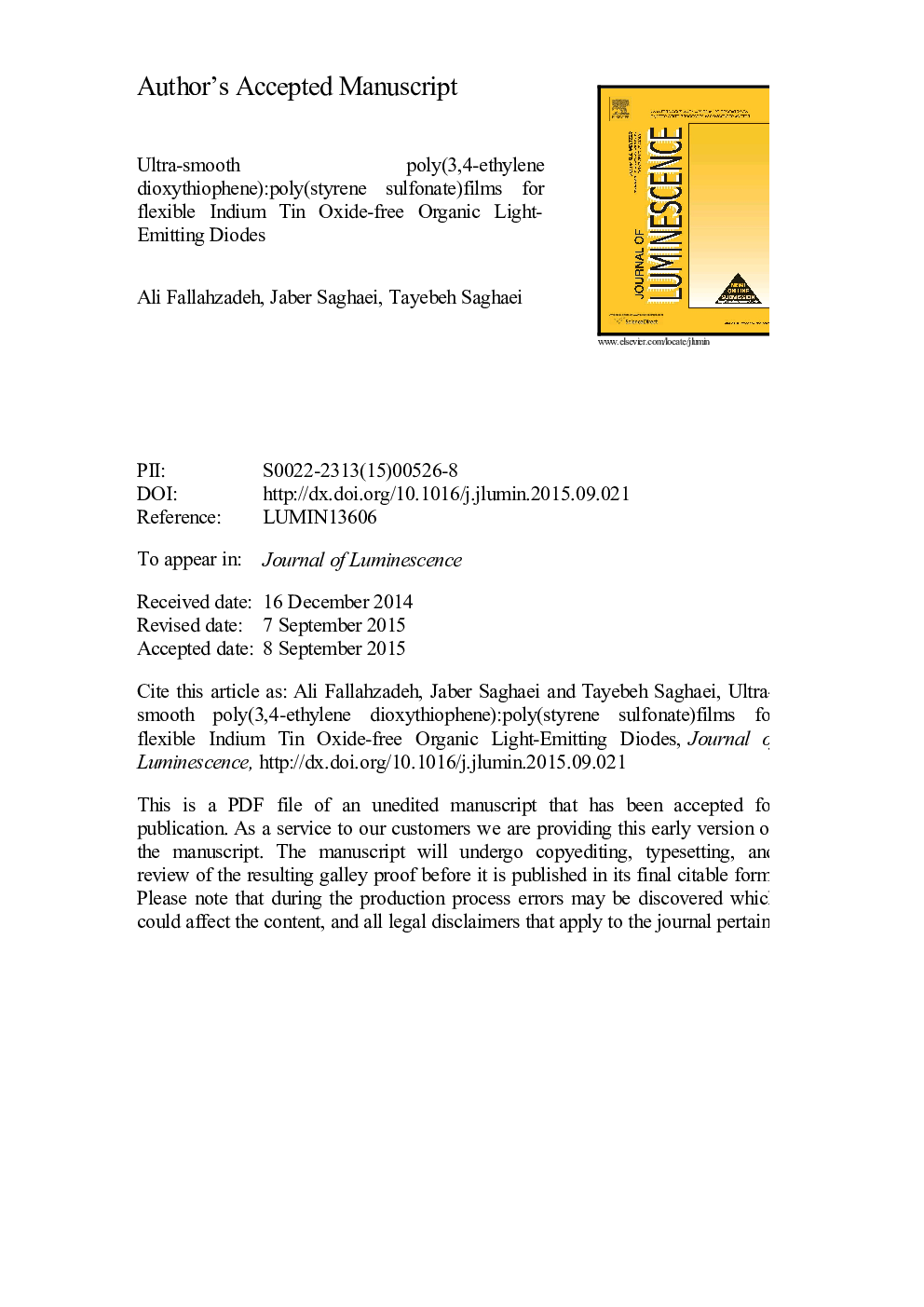| Article ID | Journal | Published Year | Pages | File Type |
|---|---|---|---|---|
| 5399240 | Journal of Luminescence | 2016 | 13 Pages |
Abstract
In this research, treated poly(3,4-ethylene dioxythiophene):poly(styrene sulfonate) (PEDOT:PSS) films - highly conductive and transparent - have been proposed as an anode of optoelectronic devices. Acid vapor was applied for treatment to enhance the conductivity of PEDOT:PSS films. Various acids including H2SO4, HNO3 and HCl were used to treat the surface of the films. Acid vapor was indicated to possess the ability to decrease the sheet resistance from 130kΩ/sq to 95Ω/sq through modifying the surface of PEDOT:PSS film by H2SO4. The root mean square roughness of PEDOT:PSS film was altered from 1.02 nm to 0.61 nm after being treated with H2SO4. The transmittances of all acid-treated films have been more than 90% in the visible range. Ultra smooth acid-treated PEDOT:PSS films with low sheet resistance and high optical transmittance were applied as anode in organic light emitting diodes (OLEDs). The indium tin oxide (ITO)-free OLED manufactured on PEDOT:PSS film treated by H2SO4 vapor displayed the highest luminance intensity of 1042cd/m2.
Related Topics
Physical Sciences and Engineering
Chemistry
Physical and Theoretical Chemistry
Authors
Ali Fallahzadeh, Jaber Saghaei, Tayebeh Saghaei,
